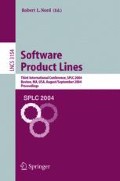Abstract
Person-to-Person marketplaces have become quite popular on the Internet. Members of the communities established by these marketplaces may sell and buy items within the community. Naturally they have certain security requirements on every trade conducted within the community. We investigate these requirements and the possibility to fulfill them to guarantee multilateral security. eBay, one of the greatest auction providers, uses a reputation system to enhance trust in its marketplace. Unfortunately this system does not address privacy. We suggest how the use of other pseudonym types can increase privacy within a marketplace community like eBay while maintaining the same level of trust.
Access this chapter
Tax calculation will be finalised at checkout
Purchases are for personal use only
Preview
Unable to display preview. Download preview PDF.
References
The Anonymizer, http://www.anonymizer.com/
Asokan, N., Shoup, V., Waidner, M.: Asynchronous protocols for optimistic fair exchange. In: IEEE Symposium on Research in Security and Privacy, pp. 86–99. IEEE Computer Society Press, Los Alamitos (1998)
Berthold, O., Federrath, H., Köpsell, S.: Web mixes: A system for anonymous and unobservable internet access. In: Federrath, H. (ed.) Designing Privacy Enhancing Technologies. LNCS, vol. 2009, pp. 115–129. Springer, Heidelberg (2001)
Chaum, D.: Showing credentials without identification. In: Pichler, F. (ed.) EUROCRYPT 1985. LNCS, vol. 219, pp. 241–244. Springer, Heidelberg (1985)
Chaum, D.: Untraceable electronic mail, return addresses and digital pseudonyms. Communications of the ACM 24(2), 84–88 (1981)
Clauî, S., Köhntopp, M.: Identity management and its support of multilateral security. Computer Networks
Federal Trade Commission. Internet auction fraud targeted by law enforcers (2003), available from http://www.ftc.gov/opa/2003/04/bidderbeware.htm
Federal Trade Commission. Internet auctions: A guide for buyers and sellers (2003), available from http://www.ftc.gov/bcp/conline/pubs/online/auctions.htm
eBay. Annual report 2003 (2003), available from http://investor.ebay.com/annual.cfm
Houser, D., Wooders, J.: Reputation in auctions: Theory, and evidence from ebay (February 2000), available at http://bpa.arizona.edu/jwooders/ebay.pdf
Harris Interactive. First major post-9/11 privacy survey finds consumers demanding companies do more to protect privacy. Rochester (February 2002), http://www.harrisinteractive.com/news/allnewsbydate.asp?NewsID=429
Köhntopp, M., Pfitzmann, A.: Anonymity, unobservability, and pseudonymity – a proposal for terminology. Draft v0.12. (June 2001)
Kollock, P.: The production of trust in online markets. In: Advances in Group Processes, vol. 16, JAI Press, Greenwich (1999)
Pfitzmann, A.: Technologies for multilateral security. In: Müller, G., Rannenberg, K. (eds.) Multilateral Security for Global Communication, pp. 85–91. Addison-Wesley, Reading (1999)
Pew Internet & American Life Project. Trust amd privacy online: why americans want to rewrite the rules, http://pewinternet.org/reports/loc.asp?Report=19 2000-08-20
Dingledine, P.S.R., Mathewson, N.: Tor: The second-generation onion router (2003), available from http://freehaven.net/tor/tor-design.pdf
Stubblebine, S.G., Syverson, P.F.: Fair on-line auctions without special trusted parties. In: Franklin, M.K. (ed.) FC 1999. LNCS, vol. 1648, pp. 230–240. Springer, Heidelberg (1999)
Waidner, M.: Development of a secure electronic marketplace for Europe. In: Martella, G., Kurth, H., Montolivo, E., Bertino, E. (eds.) ESORICS 1996. LNCS, vol. 1146, pp. 1–14. Springer, Heidelberg (1996)
Wolf, G., Pfitzmann, A.: Properties of protection goals and their integration into a user interface. Computer Networks 32, 685–699 (2000)
Author information
Authors and Affiliations
Editor information
Editors and Affiliations
Rights and permissions
Copyright information
© 2004 Springer-Verlag Berlin Heidelberg
About this paper
Cite this paper
Steinbrecher, S. (2004). Balancing Privacy and Trust in Electronic Marketplaces. In: Katsikas, S., Lopez, J., Pernul, G. (eds) Trust and Privacy in Digital Business. TrustBus 2004. Lecture Notes in Computer Science, vol 3184. Springer, Berlin, Heidelberg. https://doi.org/10.1007/978-3-540-30079-3_8
Download citation
DOI: https://doi.org/10.1007/978-3-540-30079-3_8
Publisher Name: Springer, Berlin, Heidelberg
Print ISBN: 978-3-540-22919-3
Online ISBN: 978-3-540-30079-3
eBook Packages: Springer Book Archive

